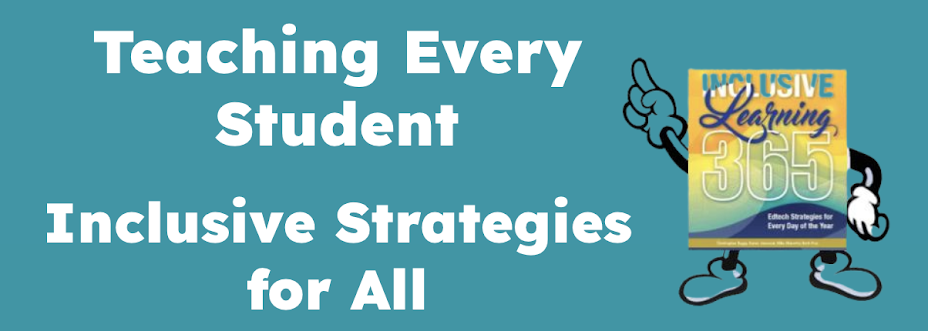Last week, the topic on the Twitter #edchat was differentiated instruction (archived here). Steven Anderson did a great job summarizing the discussion in his post, What Exactly is Differentiation?
A few tweets in particular resonated with me. One said, "I have 130 students - how can I differentiate for all of them?" (Good question. You can't). Another said, "Differentiated Instruction requires differentiated assessment." (Absolutely!) A third tweet pointed out the need to have students determine their own learning styles through the use of surveys or inventories.
Unfortunately, this was another missed opportunity to explore the tenets of Universal Design for Learning. Everyone knows the buzzwords of Differentiation Instruction, DI for short, or Understanding by Design, UBD, or Multiple Intelligences Theory. Where was the conversation about UDL?
When UDL principles are embedded proactively into the curriculum, differentiation occurs seamlessly. UDL is about multiple methods - of engaging kids, of presenting material to them and then giving students multiple ways to demonstrate what they have learned. When it is incorporated in the curriculum, there is no need for learning style inventories. There's no need for a teacher to feel overwhelmed because they have 25, 50 100 or even 130 students. It's part of the presentation, the engagement, the expression. It's all about offering choices to reach all the students in your classroom, every period of every day. The one size fits all approach never worked. Now there are more resources than ever before to help your students succeed.
It's so much easier than differentiation. And it reaches all learners. Why aren't you using UDL principles to reach every student?
Additional UDL Resources:
What is UDL?
UDL Guidelines (presented using UDL principles)
UDL Lesson Builder
UDL YouTube Channel
UDL For All Ning
Free UDL Tech Toolkit

Karen,
ReplyDeleteWhile I'm sorry that I missed this EdChat, I'm so glad that you posted something! I think this topic is overlooked on so many levels, UDL needs to be looked at by districts as they develop the curriculum!!!! It has to be there from the beginning!
Patrick,
ReplyDeleteDo you have any suggestions on how to effectively spread the word? Any ideas that have worked in your district?
Your point about embedding UDL principles as the curriculum is being developed is crucial.
You made my day. We just had the same conversation this afternoon! Thanks.
ReplyDeleteKaren,
ReplyDeleteYour passion keeps me going! I am having the same difficulty with the districts I work with. Superintendents want UDL as a professional development opportunity. Teachers feel overwhelmed along with the thinking that DI and UDL are the same, just a new acronym. What to do next? I have been thinking of presenting to curriculum coordinators, Sped Administrators and hoping for a trickle down effect as one way while still trying to penetrate the mindset of the overwhelmed, data and AYP driven teacher.
Karen,
ReplyDeleteAlthough I am only a preservice teacher, I must say that I couldn't agree more that Universal Design for Learning is much easier than differentiation.
This past summer I took a Speical Topics - Special Education course that focused greatly on UDL. The answer seems so obvious - that if we allow our students multiple means of representation, multiple means of expression, and multiple means of engagement, then we will successfully include all learners (including those with intellectual disabilities).